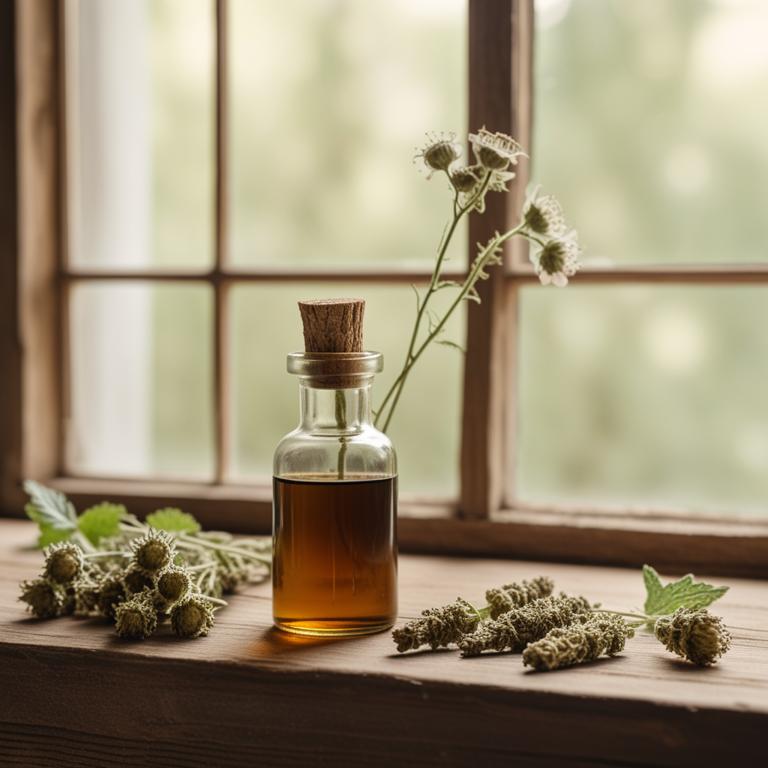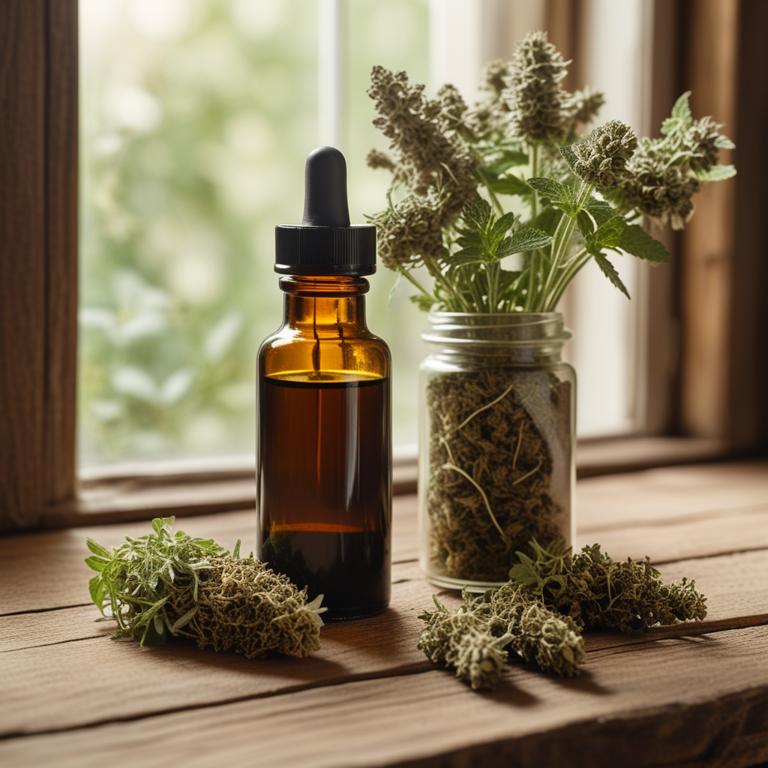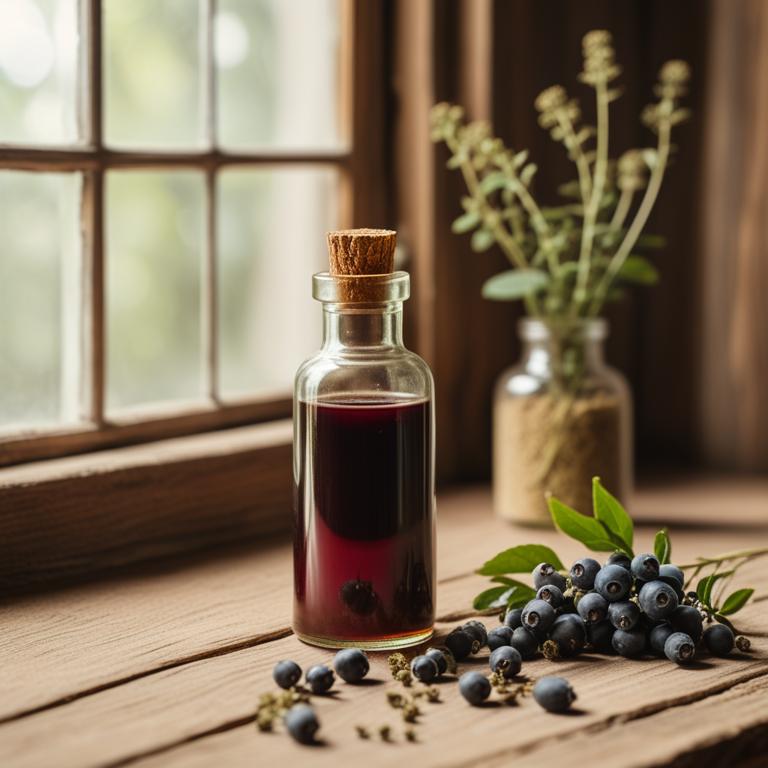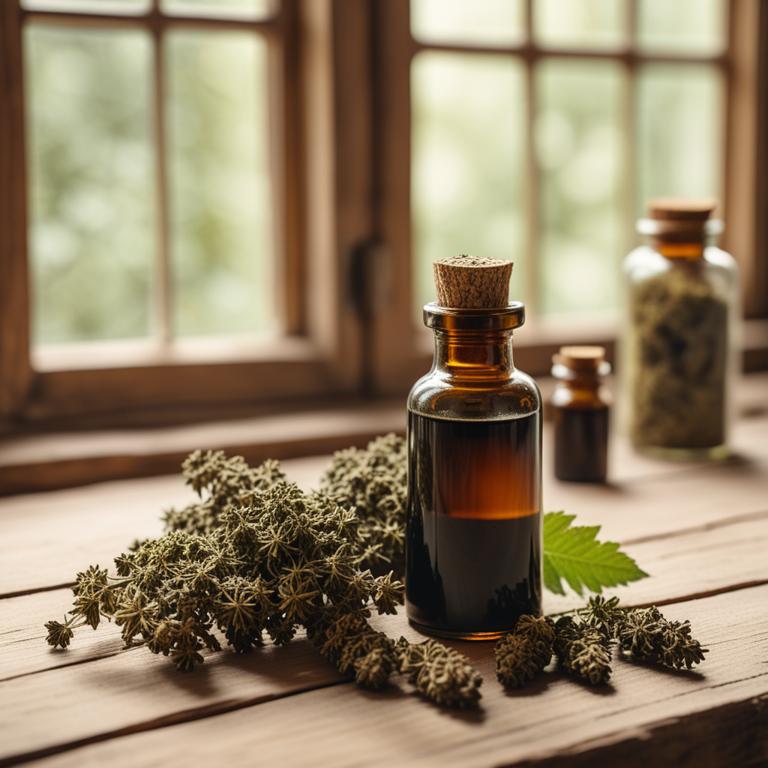9 Best Herbal Tinctures For Vaginitis

Herbal tinctures for Vaginitis are liquid extracts made from plants and herbs that are used to treat vaginal infections and inflammation.
These tinctures offer several benefits, including reducing inflammation, killing bacteria, and promoting healing, making them a popular alternative to conventional treatments.
Examples of herbal tinctures used to treat vaginitis include tea tree oil, which has antibacterial properties that help combat bacterial vaginosis; goldenseal, which has antifungal properties that help combat yeast infections; and calendula, which has anti-inflammatory properties that help soothe irritated tissues; as well as echinacea, which has immune-boosting properties that help the body fight off infections.
Additionally, other herbal tinctures such as chamomile, dandelion root, and sage are also used to treat vaginitis due to their antifungal and antibacterial properties, and their ability to promote healing and reduce inflammation.
According to "Medicinski glasnik : official publication of the Medical Association of Zenica-Doboj Canton, Bosnia and Herzegovina", tinctures for vaginitis, specifically those based on St. John's wort, chamomile, calendula, yarrow, shepherd's purse, and tea tree oil, showed a positive effect in treating vaginitis, with tea tree oil-based tinctures demonstrating better efficiency.
Below there's a list of the 9 best herbal tinctures for vaginitis.
- 1. Melissa officinalis tinctures
- 2. Cinchona officinalis tinctures
- 3. Hypericum perforatum tinctures
- 4. Lavandula angustifolia tinctures
- 5. Calendula officinalis tinctures
- 6. Aloe barbadensis tinctures
- 7. Eucalyptus globulus tinctures
- 8. Vaccinium myrtillus tinctures
- 9. Sambucus nigra tinctures
Also you may be interested in...
TODAY'S FREE BOUNDLE
Herb Drying Checklist + Herbal Tea Shopping List + Medicinal Herbs Flashcards
Enter you best email address below to receive this bundle (3 product valued $19.95) for FREE + exclusive access to The Aphotecary Letter.
$19.95 -> $0.00
1. Melissa officinalis tinctures

Melissa officinalis tinctures have been traditionally used to treat vaginitis, an inflammatory condition of the vagina, due to their anti-inflammatory, antimicrobial, and antifungal properties.
These properties help to reduce inflammation, eliminate fungal and bacterial infections, and promote a healthy vaginal microbiome, thereby alleviating symptoms of vaginitis.
The bioactive constituents of Melissa officinalis tinctures, including rosmarinic acid, caffeic acid, and flavonoids, contribute to their therapeutic effects by exhibiting antioxidant and anti-inflammatory activities, which aid in soothing and protecting the vaginal mucosa.
Regular use of Melissa officinalis tinctures has been shown to provide benefits in treating vaginitis, including rapid symptom relief, improved vaginal health, and reduced risk of recurrent infections.
2. Cinchona officinalis tinctures

Cinchona officinalis tinctures have been traditionally used to treat vaginitis, an inflammatory condition of the vagina.
The anti-inflammatory and antimicrobial properties of this herbal preparation help to reduce inflammation and combat infections that cause vaginitis.
The bioactive constituents, including quinine, quinidine, and alkaloids, help to soothe the vaginal lining, reduce discomfort, and promote healing.
By utilizing the antifungal and antibacterial properties of Cinchona officinalis tinctures, women can experience relief from symptoms such as itching, burning, and discharge associated with vaginitis.
3. Hypericum perforatum tinctures

Hypericum perforatum tinctures have been traditionally used to treat vaginitis due to their anti-inflammatory, antimicrobial, and antioxidant properties.
The bioactive constituents present in these tinctures, such as hyperforin and hypericin, help to reduce inflammation and combat fungal and bacterial infections that cause the condition.
By inhibiting the growth of pathogens and promoting healing, Hypericum perforatum tinctures help to alleviate symptoms of vaginitis, including itching, burning, and discharge.
The benefits of using these tinctures include a reduction in discomfort and pain, improved healing, and a decrease in the risk of recurrence, making them a popular natural remedy for vaginitis treatment.
4. Lavandula angustifolia tinctures

Lavandula angustifolia tinctures have been traditionally used to treat vaginitis, an inflammatory condition affecting the vagina.
The antiseptic, anti-inflammatory, and antimicrobial properties of this herbal preparation help to soothe and calm the affected area, reducing inflammation and promoting healing.
The bioactive constituents, including linalool and linalyl acetate, exhibit antimicrobial activity, inhibiting the growth of pathogenic microorganisms that contribute to the development of vaginitis.
The benefits of using Lavandula angustifolia tinctures to treat vaginitis include reduced symptoms, improved vaginal health, and a decreased risk of complications associated with the condition.
5. Calendula officinalis tinctures

Calendula officinalis tinctures have been traditionally used to treat vaginitis, a common condition characterized by inflammation and irritation of the vaginal area.
The anti-inflammatory and antimicrobial properties of Calendula officinalis tinctures help to soothe and calm the affected area, reducing symptoms such as itching, burning, and discharge.
The bioactive constituents of Calendula officinalis, including triterpene acids, flavonoids, and saponins, play a crucial role in its therapeutic effects, inhibiting the growth of pathogenic microorganisms and promoting tissue repair.
By using Calendula officinalis tinctures, women can experience relief from vaginitis symptoms, promoting a healthy vaginal microbiome and reducing the risk of recurrent infections.
Related Study
According to "Medicinski glasnik : official publication of the Medical Association of Zenica-Doboj Canton, Bosnia and Herzegovina", Calendula officinalis tinctures, as part of a combination herbal formulation, showed a positive effect in the treatment of vaginitis, particularly in combination with other plant extracts.
6. Aloe barbadensis tinctures

Aloe barbadensis tinctures have been traditionally used to treat vaginitis, a common vaginal infection characterized by inflammation and irritation.
The anti-inflammatory and antimicrobial properties of Aloe barbadensis help to soothe and calm the vaginal tissue, reducing inflammation and promoting healing.
The bioactive constituents, including aloin, aloe-emodin, and aloe-juice, have been shown to exhibit antibacterial and antifungal activity, effectively combating the underlying infection.
By using Aloe barbadensis tinctures, individuals can experience relief from the symptoms of vaginitis, including itching, burning, and discharge, and promote a healthy balance of vaginal flora.
7. Eucalyptus globulus tinctures

Eucalyptus globulus tinctures have been traditionally used to treat vaginitis due to their antimicrobial, anti-inflammatory, and antioxidant properties.
The tannins and flavonoids present in Eucalyptus globulus tinctures help to reduce inflammation and combat bacterial and fungal infections that cause vaginitis.
The bioactive constituents, including cineole and globulol, exhibit antimicrobial activity that helps to eliminate the causative agents of vaginitis, thereby promoting a healthy vaginal environment.
By using Eucalyptus globulus tinctures, women can benefit from reduced symptoms of vaginitis, including itching, burning, and discharge, as well as improved overall vaginal health.
8. Vaccinium myrtillus tinctures

Vaccinium myrtillus tinctures, derived from the bilberry plant, have been traditionally used to treat vaginitis due to their anti-inflammatory and antimicrobial properties.
The anthocyanins and phenolic acids present in Vaccinium myrtillus tinctures help to soothe and balance the vaginal flora, reducing inflammation and promoting healing.
These bioactive constituents also possess antioxidant properties, which help to protect the mucous membranes from oxidative stress and promote tissue repair.
The use of Vaccinium myrtillus tinctures to treat vaginitis has been reported to provide relief from symptoms such as itching, burning, and discharge, offering a natural and effective alternative to conventional treatments.
9. Sambucus nigra tinctures

Sambucus nigra tinctures have been traditionally used to treat vaginitis, an inflammatory condition of the vagina, due to their antimicrobial and anti-inflammatory properties.
The tannins and flavonoids present in Sambucus nigra tinctures help to reduce inflammation, prevent the growth of pathogenic microorganisms, and promote healing of the affected area.
The antiseptic and astringent properties of the bioactive constituents, such as glycosides and phenolic acids, contribute to the effectiveness of Sambucus nigra tinctures in treating vaginitis by creating an environment that is unfavorable to the growth of pathogens.
The benefits of using Sambucus nigra tinctures to treat vaginitis include a reduction in symptoms, prevention of further infections, and promotion of overall reproductive health.